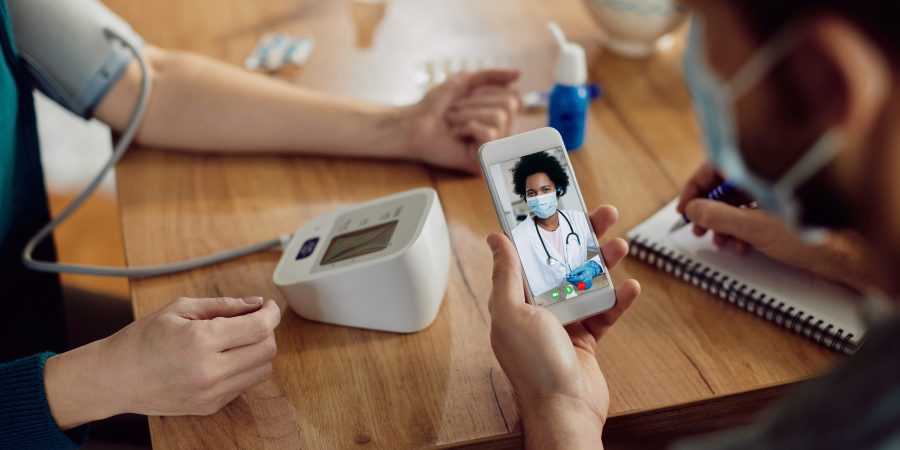Elevating Hospital Care: Integrating Remote Patient Monitoring Systems
In today’s rapidly evolving healthcare landscape, hospitals are constantly seeking innovative solutions to enhance patient care while optimizing operational efficiency. One such solution that has gained significant traction in recent years is the integration of Remote Patient Monitoring (RPM) systems. By leveraging RPM technology, hospitals can remotely monitor patients’ vital signs and health metrics in real time, enabling early intervention and personalized care delivery. This significant transformation in the healthcare landscape, largely driven by advancements in technology, has made RPM an indispensable tool in modern healthcare. RPM solutions not only enhance patient care but also improve operational efficiency and reduce healthcare costs. In this blog post, we’ll delve into the benefits of integrating RPM systems into hospital care and explore the profound impact it has on patient outcomes and hospital operations.
Understanding Remote Patient Monitoring
RPM involves the use of digital technologies to collect and transmit patient health data from a distance. This data is typically gathered through wearable devices, sensors, and mobile apps, allowing healthcare providers to monitor patients’ vital signs, symptoms, and medication adherence in real time. RPM enables proactive management of chronic conditions, early detection of health issues, and timely intervention, ultimately leading to better health outcomes for patients.
1. Improved Patient Outcomes
Studies have consistently demonstrated the efficacy of RPM in enhancing the management of chronic diseases, decreasing hospitalizations, and elevating patient satisfaction rates. According to a report from the American Medical Association, RPM interventions have led to significant reductions in hospital readmissions ranging from 15% to 60% among individuals with chronic conditions. Integrating RPM systems into hospital care offers a myriad of benefits, with improved patient outcomes at the forefront. By continuously monitoring patients’ vital signs and health metrics, healthcare providers can swiftly identify early warning signs of deterioration or complications, enabling timely interventions. This proactive approach to patient care not only helps avert adverse events but also contributes to a decrease in hospital readmissions, ultimately culminating in better patient outcomes.
2. Enhanced Care Coordination
RPM systems play a pivotal role in modern healthcare by fostering seamless communication and collaboration among healthcare teams. Real-time access to patient data empowers physicians, nurses, and other professionals to coordinate care plans effortlessly, share critical information, and make well-informed decisions regarding patient management. This enhanced collaboration not only streamlines workflows and minimizes errors but also ensures that patients receive comprehensive and coordinated care across the entire care continuum. Furthermore, RPM facilitates the early detection of deteriorating health conditions, enabling healthcare providers to intervene promptly and prevent complications. Timely intervention can significantly reduce the severity of illnesses, mitigate the need for hospitalizations, and ultimately enhance overall patient outcomes.
3. Increased Patient Engagement
RPM revolutionizes healthcare by promoting patient engagement and empowerment. By involving patients in their care, RPM encourages proactive steps towards managing health conditions. Patients benefit from the convenience of remote monitoring, receiving care in the comfort of their homes while staying connected to healthcare providers. Integrating RPM systems into hospital care further enhances patient empowerment. Through remote monitoring devices and mobile applications, patients can conveniently track vital signs, medication adherence, and symptom progression from home. This increased engagement and self-management result in better treatment adherence, improved health outcomes, and ultimately, a higher quality of life for patients with chronic conditions.

4. Cost Savings and Operational Efficiency
RPM revolutionizes healthcare by automating data collection and analysis, reducing staff workload, and conserving resources. It enables hospitals to prioritize care, allocate resources efficiently, and streamline workflows. RPM systems also offer substantial cost savings by cutting hospital admissions, emergency visits, and lengths of stay. Proactive monitoring of high-risk patients prevents costly interventions and hospitalizations. Additionally, RPM systems optimize resource utilization, improve bed management, and streamline workflows, resulting in enhanced operational efficiency and cost savings for healthcare organizations. According to a study in the Journal of Medical Economics, RPM programs could save hospitals up to $3,000 per patient annually in chronic disease management.
5. Scalability and Flexibility
Another advantage of RPM systems is their scalability and flexibility, allowing hospitals to adapt to evolving patient needs and organizational priorities. Whether deploying RPM technology for a specific patient population, such as those with chronic diseases or post-operative care, or implementing system-wide remote monitoring initiatives, hospitals can tailor RPM solutions to meet their unique requirements. This scalability enables hospitals to expand their remote monitoring capabilities over time and address the diverse needs of their patient population effectively.
RPM’s Market Analysis
The global RPM market is poised for substantial growth, with a projected size of $1.8 billion by 2026, according to a report by Grand View Research. This growth is fueled by a compound annual growth rate (CAGR) of 17.4%. Studies published in Telemedicine and e-Health highlight the effectiveness of RPM, showcasing a 20% reduction in hospital readmissions and a 33% decrease in emergency room visits among heart failure patients. Furthermore, the Centers for Medicare and Medicaid Services (CMS) have expanded reimbursement for RPM services, acknowledging their role in enhancing patient care and curbing healthcare expenses.
Wrapping Up
Remote patient monitoring has emerged as a transformative technology that has the potential to revolutionize hospital operations. By harnessing the power of RPM technology, hospitals can revolutionize the way they deliver care, providing patients with personalized, proactive, and high-quality healthcare services, while also optimizing resource utilization. As healthcare continues to evolve, RPM systems will play an increasingly vital role in elevating hospital care, enhancing patient outcomes, and transforming the patient experience. Partnering with DrCare247 ensures seamless integration and maximizes the benefits of RPM for hospitals and patients alike.

